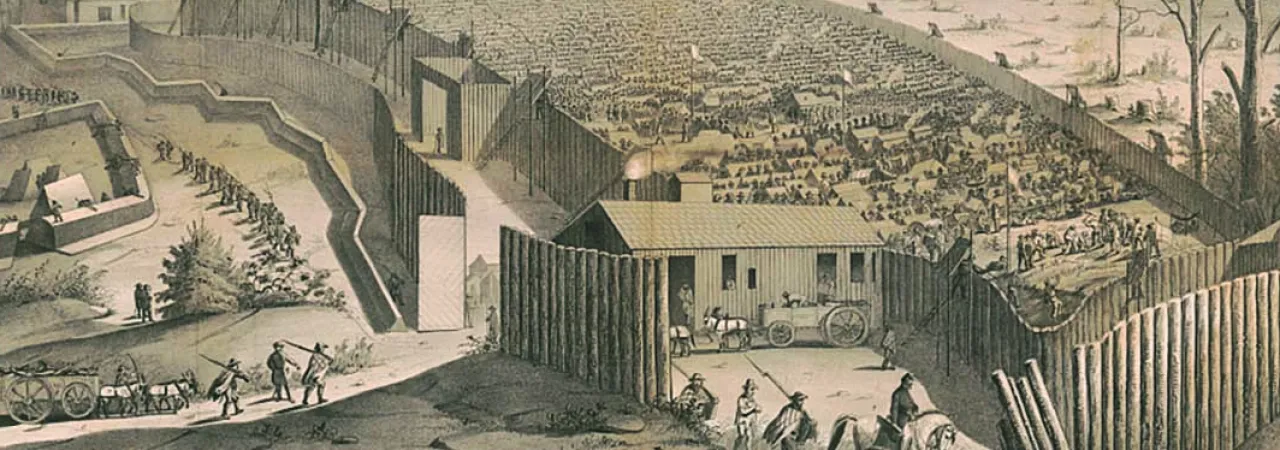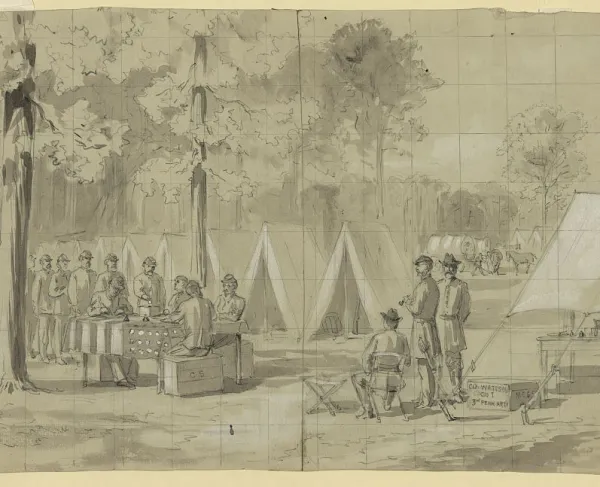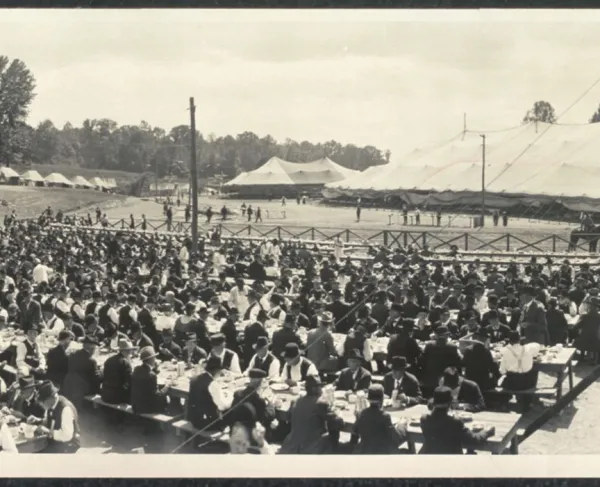
Andersonville Prison in Andersonville, Ga. was considered one of the worst POW camps in the Civili War.
Ancestry and Fold3 have been helping people understand their ancestors and why they fought for causes large and small for decades. Now, Ancestry and Fold3 have joined forces with the American Battlefield Trust, so that you can find the veterans in your family's past and understand their stories and the impact on the generations that followed. You can learn more at https: www.fold3.com/projectregiment.
In addition to this recurring Hallowed Ground column, this partnership has resulted in an exclusive discount for Trust members to subscribe to Ancestry and Fold3! Check your email for this exclusive offer.
It is no secret that ancestors can inspire the pursuit of preservation. It’s a special connection to forge — standing upon sacred soil that you helped to protect and imagining the range of emotions that raced through your ancestor’s mind as they once stood on this same ground in the heat of battle.
Andrew and Tad Druart are Trust members who have answered the call to uplift ancestral memory, with research and battlefield visits galore to fuel their passion and learn about the case of... Charles “Case” Bacon, an ancestor who fought for the Union 1862–1865. While the Druarts have retraced his footsteps and made discoveries of their own, access to Ancestry, Fold3 and Newspapers.com — in combination with a handful of other public databases — can also provide detailed insight into this fascinating soldier’s life.
With a search for a “Case Bacon” (born in Ohio, lived in Iowa) in Ancestry.com’s military records, an entry for the soldier in the “U.S., Civil War Soldier Records and Profiles, 1861–1865” collection appears. This profile starts with the 18-year-old’s enlistment as a private on February 28, 1862, with the Union’s 16th Iowa, Company F. Referring to the National Park Service’s Soldiers and Sailors Database, you can learn that the 16th Iowa was organized in Davenport, Iowa, between December 10, 1861, and March 1862. The regiment later fought in Tennessee at Shiloh; in Mississippi at Corinth, Raymond, Jackson, Champion Hill, Big Black River and Vicksburg; and in Georgia at Kennesaw Mountain and Atlanta.
Back to the profile on Ancestry.com, it’s seen that Bacon’s time as a soldier was far from easy — as he found himself imprisoned at the infamous Andersonville Prison (also known as Camp Sumter) following capture on July 22, 1864, as a result of the Battle of Atlanta.
While a Union victory that led to the capture of a critical Confederate city, the Battle of Atlanta spelled trouble for the 16th Iowa. On Fold3, details on the 16th Iowa’s actions at Atlanta are provided via an excerpt from The Union Army: A History of Military Affairs in the Loyal States, 1861-65, Volume IV (1908):
“... [the 16th Iowa] charged the batteries and lost 65 men, then held its position until completely surrounded and being entirely without ammunition, was compelled to surrender, after killing or wounding a number of the enemy equal to its own numbers... The prisoners were sent to Andersonville, with the exception of the officers, who were sent to Macon, thence to Charleston and later to Columbia. The men were exchanged on Sept. 22, but the officers remained in prison much longer. A few escaped...”
Private Bacon was at Andersonville for two months, which was noted in an Enrollment of Ex-Soldiers and Sailors that he completed in 1889 while living in Kansas (Ancestry.com, via the Kansas State Historical Society). The Druarts’ research also uncovered a copy of the General Affidavit that Bacon completed as part of his pension application, where within he wrote about his being taken to Andersonville and stripped of his coat and blanket. Further, a Civil War Prisoner of War (POW) record on Ancestry.com states that Bacon escaped on September 29.
Tad Druart expanded on Bacon’s supposed escape, saying that during a visit to Andersonville National Historic Site, a park ranger made it clear that he didn’t technically escape from the prison. A book titled Reminiscences of Andersonville and Other Rebel Prisons. A Story of Suffering, Starvation and Death spoke of a planned prisoner exchange that provided release to a few hundred federal POWs but forced a remaining 500 men to march back to the Confederate prison. The book’s chapter on Bacon’s escape claims that a thickly wooded bend in the road gave him and several others the opportunity to flee.
It is unclear how and where Bacon reconnected with Union troops, but newspaper clippings indicate that he fell in step with Maj. Gen. William T. Sherman’s troops. The Druart family also has letters from Bacon — one notes his standing guard at Sherman’s Savannah headquarters.
Private Bacon’s service continued in the Carolinas Campaign, and he even marched in Washington’s Grand Review upon the war’s end. But his time as a soldier carried a lifelong impact.
After mustering out on August 26, 1865, Bacon married Hannah Jane Stephenson and had seven children, whom they raised in McPherson County, Kansas. When Hannah’s death was reported in the McPherson Weekly Republican in December 1886, the paper also claimed that Bacon was “a helpless invalid from his service in the Atlanta and Carolina campaigns with Sherman.”
Bacon forever carried the war with him, and now his descendants persevere in protecting his story.
Your gift today helps save 77 acres at Ringgold Gap, Rocky Face Ridge, and Kennesaw Mountain — where history was made — with an incredible $22-to-$1...
Related Battles
2,359
4,838
446
515
6
0
13,047
10,669
2,457
3,840
4,910
32,363
3,000
1,000
3,722
5,500




